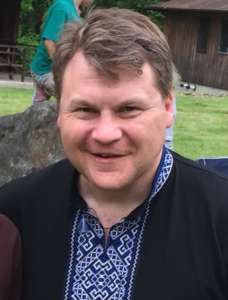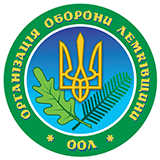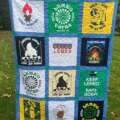 2017 marked the 70th anniversary of Operation Vistula (or Akcja Wisla), the forced resettlement by the Polish communist government of the Ukrainian minority from the southeastern provinces of post-war Poland, to the so-called Recovered Territories in the west of the country.
2017 marked the 70th anniversary of Operation Vistula (or Akcja Wisla), the forced resettlement by the Polish communist government of the Ukrainian minority from the southeastern provinces of post-war Poland, to the so-called Recovered Territories in the west of the country.
During this program, over 140,000 ethnic Ukrainians were uprooted from their ancestral lands in the regions of Kholmshchyna, Pidliashia, Nadsiannia, Boykivshchyna and Lemkivshchyna, and forced to abandon their homes, which they inhabited for generations. This program was a continuation of the state-run ethnic cleansing that started with the 1944-1946 population exchanges between Communist Poland and Soviet Ukraine, and were intended to remove all of the ethnic Ukrainians who found themselves to the “wrong” side of the newly drawn border between the two countries called the Curzon line.
Thanks to the efforts of the Ukrainian Congress Committee of America (UCCA) and many of its member organizations, much was done last year to honor those who suffered because of Akcja Wisla and to educate those who may not know this tragic chapter of history. These facts need to be repeated and spread until they are part of everyone’s general knowledge in order to (a) receive proper recognition and reparation for the crimes committed and (b) prevent similar actions from taking place ever again.
And is important that we organize this effort via multiple channels. We need to continue interviewing the survivors of Akcja Wisla and capturing their memories while they are still with us. We need to continue educating the Ukrainian community, through academic lectures, and research and publications sponsored by organizations like the Lemko Research Foundation, the Ukrainian Free University and the Shevchenko Scientific Society. We need to create materials for non-Ukrainians and English speakers. We need to continue our political advocacy through organized protests and letter-writing campaigns to the United Nations and the governments of Ukraine and Poland. We need to coordinate our efforts via the Ukrainian World Congress (UWC) and the World Federation of Ukrainian Lemko Organizations (SFULO).
The organization that I head, the Organization for the Defense of Lemkivshchyna (known by the Ukrainian acronym OOL), does all of the things which I have mentioned, but a particular area of focus is raising awareness among the next generation about Akcja Wisla. Because if we do not do this, then all of our work to date will be for naught.
Unfortunately, Ukrainians from my generation and younger, even those with Lemko heritage, tend not to know a lot about Lemkivshchyna. This is because the Lemkos, who were amongst the first Ukrainians to immigrate to America at the end of the 19th and early 20th centuries from what was then Austria-Hungary, worked very hard to preserve Ukrainian culture, but in the process forgot about their Lemko roots. In America it was, and still is, a constant struggle to support Ukraine, so all efforts and attention went towards that goal. And for that reason, Lemkos assimilated in the Ukrainian community.
But now that Ukraine is an independent democratic nation, I think we can celebrate the diversity within it while continuing to support it at the same time. I want young Lemkos to understand who they are, where they are from and why they are part of the Ukrainian nation. I want them to know about population exchanges of 1944-1946 and the forced deportations of Akcja Wisla in 1947, and understand how these events fit into the greater history of Ukraine. We must do a better job of teaching the unique history of the Kholmshchyna, Pidliashia, Nadsiannia, Boykivshchyna and Lemkivshchyna regions (together known as Zakerzonnia).
Despite all they have experienced and suffered, Lemkos, along with the other deported Ukrainians, played an unforgettable and indispensable role in building the Ukrainian American community and were members of the founding committees of all Ukrainian churches, national homes and fraternal organizations in America that exist to this day, including the Ukrainian National Association (UNA).
Similarly, Akcja Wisla survivors who remained in Europe have also suffered, because of their support for the Ukrainian national movement, and they must also be recognized and respected by the Ukrainian community.
OOL has taken concrete steps to raise Lemko awareness among our youth. For example, we worked with the Ukrainian American Youth Association (UAYA) and with various Ukrainian Saturday schools to integrate Akcja Wisla into their educational curricula. We prepared training materials and lectures and also coordinated a program of interviews between young UAYA members and fellow citizens who survived Akcja Wisla. And we have posted these lectures and interviews online at www.lemko-ool.com.
A lesser discussed aspect of Akcja Wisla is the lasting identity problems it caused among Ukrainians from Zakerzonnia. One must recognize, that the Ukrainian nationalist movement was still young and growing in that area in the 1940s, so there were still people who identified more as Rusyns than as Ukrainians. One of the tactics of the Polish Communist government was to demonize Ukrainians by associating them with the Ukrainian Insurgent Army (UPA), which they painted as terrorists and bandits. This had the effect of slowing the natural progression of the Ukrainian movement by creating new stigmas and tensions within the Ukrainian community, which unfortunately still exist today.
In fact, there are Lemkos both in Europe and here in North America who are anti-Ukrainian and very vocal. Some of them have Russophile roots and others have joined the newly re-invented Carpatho-Rusyn movement. I feel that the best way to combat Rusynism is not to argue with them directly, because that gives them fuel, but to explain the Ukrainian Lemko position clearly and positively, and to allow people to draw their own conclusions. Currently, we are allowing the Carpatho-Rusyns to write our story, and they are presenting us in a negative light. We need to explain to the world why we Lemkos associate with the Ukrainian state and show that we are not the “enemy” as they claim.
One may ask if Akcja Wisla succeeded, and I would like to conclude with my thoughts to this question. As mentioned, the negative effects of the action were tremendous. The loss of property and ancestral land. The physical torture, imprisonment and murder. The forced assimilation and labeled stigma. All of these things caused irreversible damage, which is hard to quantify and is still being felt today.
But I would argue that Akcja Wisla also had unintended consequences that work in the favor of the Ukrainian nation-state. The heinous acts against us sparked a generation of activists, who will not be silenced. Also, there were new economic and educational opportunities in western Poland, allowing Ukrainians to improve their financial and societal status. And the resulting emigrations to other European countries and North America led to an entire network of educated professionals with new financial resources.
Take my family as an example. Both of my parents were born in Lemkivshchyna, in the villages of Zdynia and Smerekowiec to be precise. And both of them eventually immigrated to the United States where they finished university – the University of Connecticut and City College of New York, respectively. And they gave birth to three children who all finished prestigious universities and completed advanced degrees, including Oberlin College and Columbia University for my sisters and Harvard for myself. As a result, I think we are in a much better position to help build the Ukrainian nation than if we were still living on our family farm in Lemkivshchyna.
In short, despite their best efforts, I believe that the Communist governments of the Soviet Union and Poland did not succeed in “solving the Ukrainian problem.” To use an analogy, while they did manage to put out the initial flame by destroying the local Ukrainian community irreversibly, they also inadvertently spread the embers that have now grown into fires of their own, which are now larger and more widespread than the original one. It is our job as descendants of the survivors of Akcja Wisla to make sure that the resulting “Vatra” continues to burn brightly.



